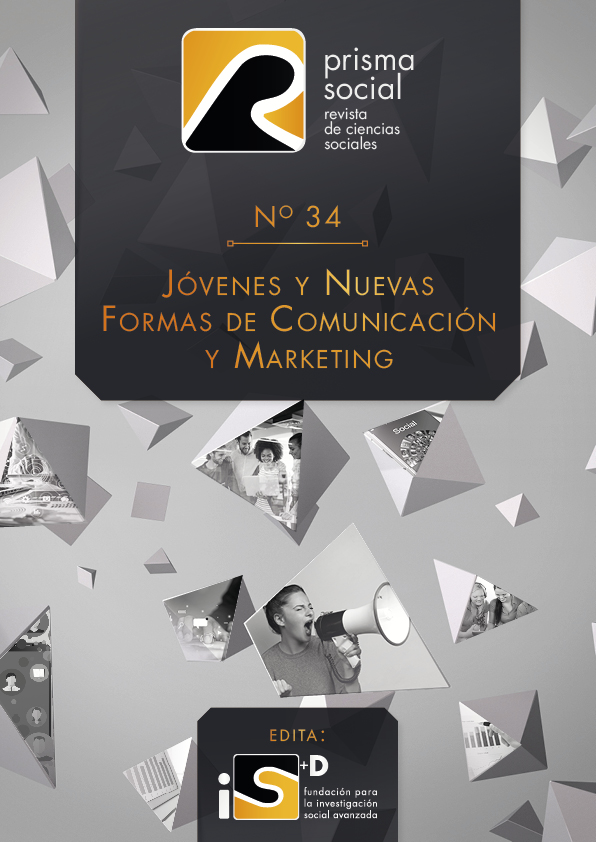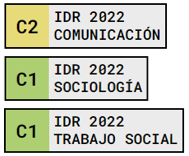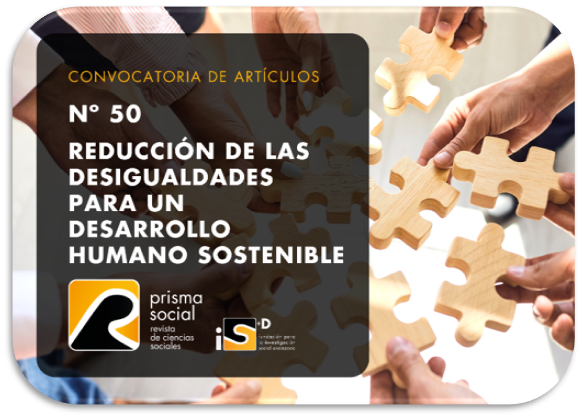Brands as the axis of socialisation of the Alpha Generation
Keywords:
Brands, Socialisation, Communication, Internet, childhood, Generation AlphaAbstract
In a hyper-fragmented environment of channels, platforms and content, brands are finding increasingly difficult to reach Generation Alpha in a relevant and differential way. This paper aims to study the variables that determine the choice of brands in the digital context by children between 6 and 12 years old. To study this preference, a survey of 1,357 children was carried out, applying different statistical tests to determine which variables are predictive in the selection of brands. Among the main results when choosing a brand are that the brand must be trendy, famous, that it helps them to meet people and that it is their best toy. Socialisation processes and the need to communicate with their friends are the main reasons for children to incorporate brands into their digital universe. Therefore, companies that want their brands to be part of the life of Generation Alpha in an authentic and unique way, must favour communicative contexts of interaction where the brand is an excuse to socialise.
Downloads
References
Aktas, Y., Ta??, I., y Gürgah, I. (2016). The development of brand awareness in young children: How do young children recognize brands?: Brand awareness in young children. International Journal of Consumer Studies, 40(5), 536-542. https://doi.org/10.1111/ijcs.12298
Bachmann, G. A., y Roedder, J. (2003). The meaning of brand names to children: A developmental investigation. Journal of Consumer Psychology, 13(3), 205-219. https://doi.org/10.1207/S15327663JCP1303_03
Blackwell, C., Lauricella, A., y Wartella, E. (2014). Factors influencing digital technology use in early childhood education. Computers & Educucation, 77, 82–90.
Cervilla-Fernández, A. & Marfil-Carmona, R. (2020). Publicidad e infancia en Instagram. Análisis del uso de la imagen de niños y niñas por parte de madres influencers. En S. Liberal & L. Mañas (Coords.), Las redes sociales como herramienta de comunicación persuasiva, (pp. 201-212). McGraw-Hill.
Chaplin, L. N., y Roedder, J., D. (2005). The development of self?brand connections in children and adolescents. Journal of Consumer Research, 32(1), 119-129. https://doi.org/10.1086/426622
Chaudron, S. (2015). Young children (0-8) and digital technology: a qualitative exploratory study across seven countries. Luxemburgo: Oficina de Publicaciones de la Unión Europea (Informes de ciencia y política del CCI. Informe EUR 27052). https://cutt.ly/3b6VfZz
EU Kids Online (2020). EU Kids Online 2020, Survey Results from 19 countries [Archivo PDF]. https://bit.ly/3g662L1
Empantallados (27 de mayo de 2020). El impacto de las pantallas en la vida familiar durante el confinamiento. https://cutt.ly/0b6VpSK
Feijoo, B. & Fernández-Gómez, E. (2021). Niños y niñas influyentes en YouTube e Instagram: contenidos y presencia de marcas durante el confinamiento. Cuadernos.info, 49, 300-328. https://doi.org/10.7764/cdi.49.27309
Feijoo, B., Sádaba, C., & Bugueño, S. (2020). ¿Nivel experto o ingenuo? Detección y confianza de los niños en la publicidad que reciben a través de sus dispositivos móviles. Perfiles de usuario. Zer: Revista de Estudios de Comunicación, 25(48), 231-248. https://doi.org/10.1387/zer.2152
Gaptain. (2020). Estudio Ciberseguridad y Convivencia escolar 2020 [Archivo PDF]. https://gaptain.com/blog/estudio-ciberseguridad-y-convivencia-escolar-2020/
Gaitán, L. (2006). Sociología de la infancia. Síntesis.
González-Durán, M. (2021). ‘Marketing’ infantil: Lo que las marcas deben tener en cuenta hoy en día. Harvard Deusto business review, 308, 56-62.
Google. (2012). Teens & Twenty-Somethings Research Study [Archivo PDF]. https://www.thinkwithgoogle.com/_qs/documents/709/media-habits-of-teens-and-twenty-somethings-2012_research-studies.pdf
Guest, L. P. (1955). Brand Loyalty—Twelve Years Later. Journal of Applied Psychology, 39, 405–408.
Hatch, M. J., y Schultz, M. (2008). Taking brand initiative: How companies can align strategy, culture, and identity through corporate branding. Jossey-Bass.
Holloway, D., Green, L., y Livingstone, S. (2013). Zero to Eight. Young Children and Their Internet Use. EU Kids Online.
James, A., y Prout A. (1997). Constructing and Reconstructing Childhood. Falmer Press.
John, D. R. (1990). Age differences in product categorization. Journal of Consumer Research, 16, 452-460.
John, D. R. (1999). Consumer Socialization of Children: A Retrospective Look at Twenty-Five Years of Research. Journal of Consumer Research, 26(1), 183-213.
Jones, K., y Glynn, M. (2019). How children use social media for brand interactions. Young Consumers, 20(2), 91-108. https://doi.org/10.1108/YC-10-2018-0860
Llorente, C., García, M. L., y Kolotouchkina, O. (2020). El impacto de las redes sociales en la estrategia de las marcas: Creatividad, engagement y eWOM. En S. Liberal Ormaechea y L. Mañas (coord.), Las redes sociales como herramienta de comunicación persuasiva (pp. 35-53). McGraw-Hill.
Martínez, E., Núñez-Gómez, P., y Cherigny, F. (2021). Entertainment or advertising? YouTube channels displaying content created by kids. En V. I. de La Ville, P. Garnier y G. Brougère (Ed.), Cultural and Creative Industries of Childhood and Youth: An interdisciplinary exploration of new frontiers (pp. 63-87) ICCA.
Martorell, C., y Serra, C. (2020). Estudio de las motivaciones de afiliación en las comunidades de marca online: Una propuesta de taxonomía. En S. Liberal Ormaechea y L. Mañas (coord.), Las redes sociales como herramienta de comunicación persuasiva (pp. 107-120). McGraw-Hill.
McCrindle, M. (2014). The ABC of XYZ: Understanding the Global Generations. McCrindle Research Pty Ltd.
McCrindle, M. (19 de septiembre de 2015). Meet Alpha: The Next ‘Next Generation’ The New York Times. https://cutt.ly/ubuajOA
Moschis, G.P. y Churchill, G. A. (1978). Consumer socialization: a theoretical and empirical analysis. Journal of Marketing Research, 15(4), 599-609.
Núñez-Gómez, P., Monguí Monsalve, M., y Larrañaga, K. (2020a). Actitudes de los niños, niñas y adolescentes hacia el uso seguro de Internet y las Redes Sociales. Internet Seguro For Kids (IS4K). INCIBE. https://cutt.ly/ubuyieb
Núñez-Gómez, P., Ortega-Mohedano, F., Monguí Monsalve, M., y Larrañaga, K. (2020b). El consumo y uso de dispositivos móviles y Apps por los niños y las niñas de la generación Alpha en España. Internet Seguro For Kids (IS4K). INCIBE. https://tinyurl.com/yeyoqb5b
Núñez-Gómez, P., Sánchez-Herrera, J., y Pintado-Blanco, T. (2020c). Children’s engagement with brands: From social media consumption to brand preference and loyalty. Sustainability, 12(22), 9337. https://doi.org/10.3390/su12229337
Núñez-Gómez, P., Ortega-Mohedano, F., Monguí Monsalve, M., y Larrañaga, K. (2021b). El uso de dispositivos móviles y Apps por los niños y las niñas en España post-confinamiento. Internet Seguro For Kids (IS4K). INCIBE. https://cutt.ly/3buy4ct
Núñez-Gómez, P., Ortega-Mohedano, F., y Larrañaga-Martínez, K. (2021a). Hábitos de uso y consumo de pantallas inteligentes entre niños/as de 7 a 9 años en España. Revista Mediterránea de Comunicación, 12(1), 191-204. https://doi.org/10.14198/MEDCOM000009
Ofcom. (2019). Children and parents: media use and attitudes report 2018. Ofcom. https://cutt.ly/puvtQLh
Ortega-Mohedano, F. & Pinto-Hernández, F. (2021). Predicting wellbeing in children’s use of smart screen devices. Comunicar, 29(66), 119-128. https://doi.org/10.3916/C66-2021-10
Pavez, I. (2012). Sociología de la Infancia: las niñas y los niños como actores sociales. Revista de sociología, 27, 81-102.
Pavez-Soto, I. y Sepúlveda Kattan, N. (2019). Concepto de agencia en los estudios de infancia. Una revisión teórica. Sociedad E Infancias, 3, 193-210. https://doi.org/10.5209/soci.63243
Piaget, J. (1968). Los estadios del desarrollo intelectual del niño y del adolescente. Editorial Revolucionaria.
Qustodio. (2020). Informe anual de Qustodio 2020 sobre los hábitos digitales de los menores. https://cutt.ly/Ub6VsZA
Rangel, C. (2015). Claves para elegir un modelo de gestión de marcas. aDResearch ESIC International Journal of Communication Research, 11(11), 40-57. https://doi.org/10.7263/adresic-011-03
Reisman, D., y Howard, R. (1955). Careers and Consumer Behavior. En L. Clark, Consumer Behavior (Ed.), The Life Cycle and Consumer Behavior (Vol. 2, pp. 1-18). New York University Press.
Robayo, O. (2012). Las marcas y el proceso de socialización del consumo en niños y adolescentes: el caso colombiano. REDMARKA UIMA-Universidad de A Coruña – CIECID, 5(8), 21-51.
Rodhain, A. (2006). Brands and the Identification of Children. Advances in Consumer Research, 33, 549-555.
Rosenbaum-Elliott, R., Percy, L., y Pervan, S. (2011). Strategic brand management. Oxford University Press.
Rozendaal, E., Lapierre, M. A., van Reijmersdal, E. A., y Buijzen, M. (2011). Reconsidering advertising literacy as a defense against advertising effects. Media Psychology, 14(4), 333-354. https://doi.org/10.1080/15213269.2011.620540
Sünker, H. y Moran-Ellis, J. (2018). Nuevos estudios de infancia, política de infancia y derechos de los niños y niñas. Sociedad E Infancias, 2, 171-188. https://doi.org/10.5209/SOCI.59592
Tur-Viñes, V., Núñez-Gómez, P., y González-Río, M. (2018). Menores influyentes en YouTube. Un espacio para la responsabilidad. Revista Latina de Comunicación Social, 73, 1211-1230. https://doi.org/10.4185/RLCS-2018-1303
Vergara, A., Peña, M., Chávez, P., y Vergara, E. (2015). Los niños como sujetos sociales: El aporte de los Nuevos Estudios Sociales de la infancia y el Análisis Crítico del Discurso. Psicoperspectivas, 14(1), 55-65.
Vizcaino-Laorga, R., Martinez, E., Nicolas, M. A., & Atauri, D. (2021). Kid youtubers in Spain and their practices as toy marketing in?uencers on Youtube. Medijska Istraživanja?: Znanstveno-Stru?ni ?asopis Za Novinarstvo i Medije, 27(1), 99-124. https://doi.org/10.22572/mi.27.1.5
Voltarelli, M., Gaitán, L., y Leyra, B. (2018). La sociología de la infancia y Bourdieu: diálogos sobre el campo en países hispano-hablantes. Política y Sociedad, 55(1), 283-309. https://doi.org/10.5209/POSO.56119
YouTube. (2018). Guía práctica de creación de contenido para YouTube Kids. YouTube Kids. https://cutt.ly/dvv6ErI
Downloads
Published
How to Cite
Issue
Section
License
Copyright (c) 2021 Revista Prisma Social

This work is licensed under a Creative Commons Attribution-NonCommercial-NoDerivatives 4.0 International License.
Los derechos de edición pertenecen a la Fundación iS+D para la Investigación Social Avanzada, entidad que edita la Revista Prisma Social, y es necesario su permiso para cualquier reproducción. En todo caso, será necesario citar la procedencia de cualquier reproducción total o parcial.
La publicación de artículos o reseñas en la Revista Prisma Social no da derecho a remuneración alguna.
Política de acceso abierto
La publicación de la Revista Prisma Social y su difusión se realiza de forma abierta a través de Internet.
La Revista Prisma Social ofrece acceso libre y abierto inmediato a su contenido de forma totalmente gratuita con el fin de hacer llegar la investigación científica a toda la sociedad y con el objetivo de crear una cultura reflexiva encaminada a la comprensión de los comportamientos sociales desde una perspectiva global.
Todos los contenidos digitales de la Revista Prisma Social son de acceso libre y gratuito y se publican bajo una licencia de Creative Commons:

está bajo una licencia de Creative Commons Reconocimiento-NoComercial-SinObraDerivada 3.0 España License.
Creado a partir de la obra en www.isdfundacion.org
Bajo esta licencia, está permitida la reproducción y difusión de los contenidos de la revista con fines educativos o de investigación, sin ánimo de lucro, siempre y cuando estos no se modifiquen, se cite la procedencia (Prisma Social, Revista de ciencias sociales), y la autoría.
Esta licencia a la que se acoge la Revista Prisma Social permite copiar, distribuir, exhibir los textos e imágenes de la revista, siempre que se cumplan las siguientes condiciones:
- Reconocimiento: Debe reconocerse y respetarse la autoría de la obra de la manera especificada por el autor y la entidad editora (Revista Prisma Social – Fundación iS+D).
- No comercial: No se puede utilizar esta obra para fines comerciales.
- No derivados: No se puede alterar, transformar o generar una obra derivada a partir de esta obra.
Se deberán establecer claramente los términos de esta licencia para cualquier uso o distribución de los documentos. Se podrá prescindir de cualquiera de estas condiciones si se obtiene el permiso expreso del autor/a.
Desde la Revista de Prisma Social se permite y se invita a los/as autores/as a ampliar la visibilidad, alcance e impacto de sus artículos publicados en la revista mediante la redifusión (auto-archivo) de los mismos en:
1. Sus espacios web personales (web, blog, redes sociales, foros científicos, etc.).
2. Archivos abiertos institucionales (archivos universitarios, Hispana, Europeana, etc.).
3. Redes sociales de naturaleza académica y científica (ResearchGate, Academia.edu, Getcited.org).
Se requiere que en dichas publicaciones se detallen todos los datos bibliográficos de la publicación.
Para más información, puede descargar y consultar las Condiciones de Publicación:























.png)




